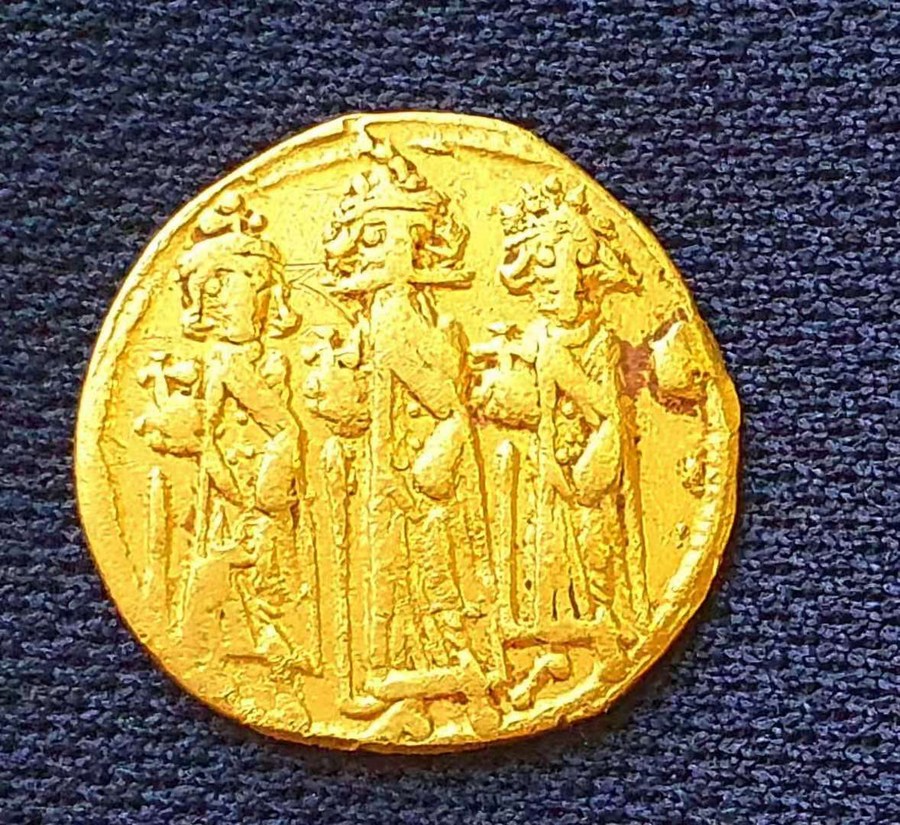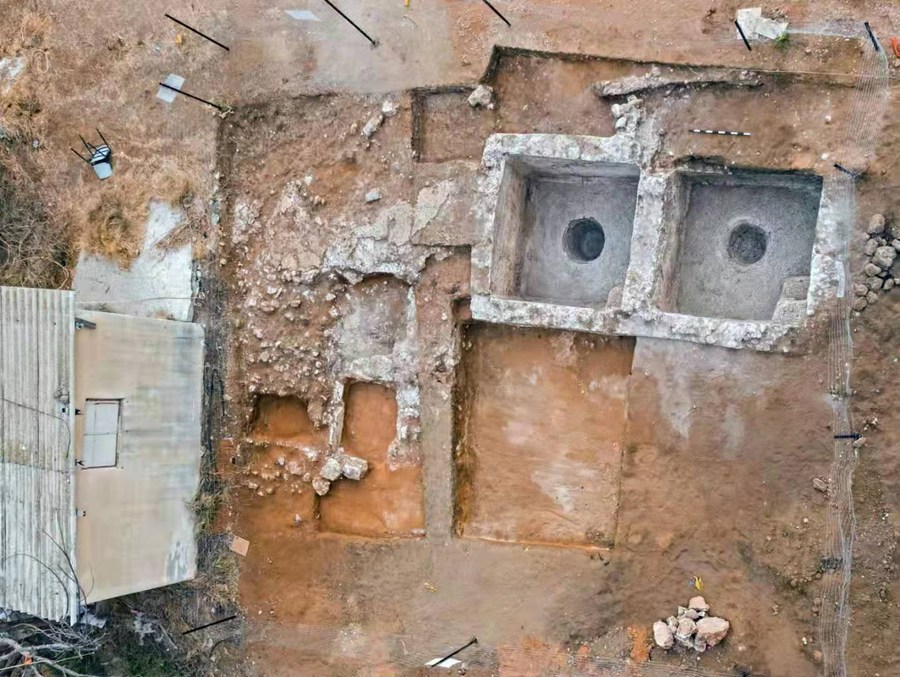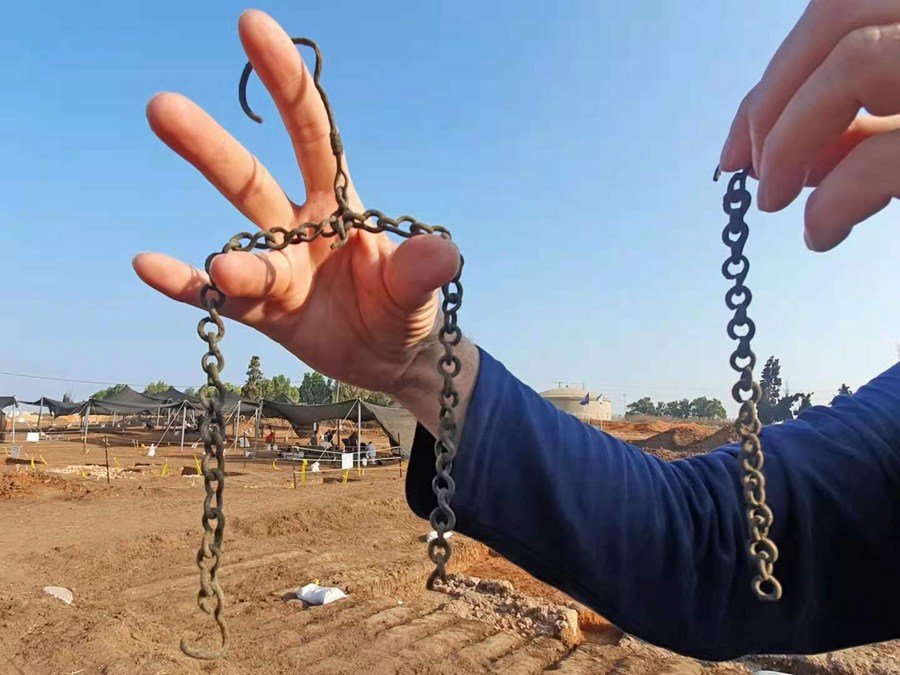
The picture shows a 1,500-year-old gold coin baring the figure of the Byzantine emperor Heraclius and his two sons. (Israel Antiquities Authority)
JERUSALEM, Aug. 18 (Xinhua) -- Israeli archaeologists have discovered evidence of agricultural and industrial activity in the Byzantine period, about 1,500 years ago, the Israel Antiquities Authority (IAA) said on Wednesday.

The picture shows the place where a 1,500-year-old winepress was discovered at Israel's city of Ramat Hasharon. (Israel Antiquities Authority)
The finds, unearthed in the central city of Ramat Hasharon, include a large winepress, a gold coin, and a bronze chain that was used to suspend a chandelier, according to the IAA.
The winepress was paved with a mosaic as well as plastered installations and the foundations of a large structure, used as a warehouse or a farmstead.
The gold coin was minted by the Byzantine Emperor Heraclius, who was depicted with his two sons on one side. The reverse shows a cross on the hill of Golgotha where, according to Christian tradition, Jesus was crucified.

The picture shows a 1,500-year-old gold coin baring the figure of the Byzantine emperor Heraclius and his two sons. (Israel Antiquities Authority)
The coin also has an inscription scratched in Greek, and possibly also in Arabic, with the name of the coin's owner, who marked it as highly valuable property.
The bronze chain was used to suspend a chandelier containing glass lamp holders. Chandeliers of this type are usually found in churches.

The picture shows 1,500-year-old bronze chains used to suspend a chandelier.(Israel Antiquities Authority)
Inside the buildings and installations, many fragments of storage jars and cooking pots were found, along with basalt mortars and millstones that were used to grind wheat and barley and to crush herbs and medicinal plants.
After the Muslim conquest in the seventh century, a glass-making workshop and a warehouse were built at the site.
Four massive jars from that period were found sunk into the floor, evidently used to store grain and other products as a precaution against pests and damp conditions.
The remains of houses and two large baking ovens were also discovered, indicating that people were also living there. Pottery lamps and local and imported serving ware were also found at the site. ■




